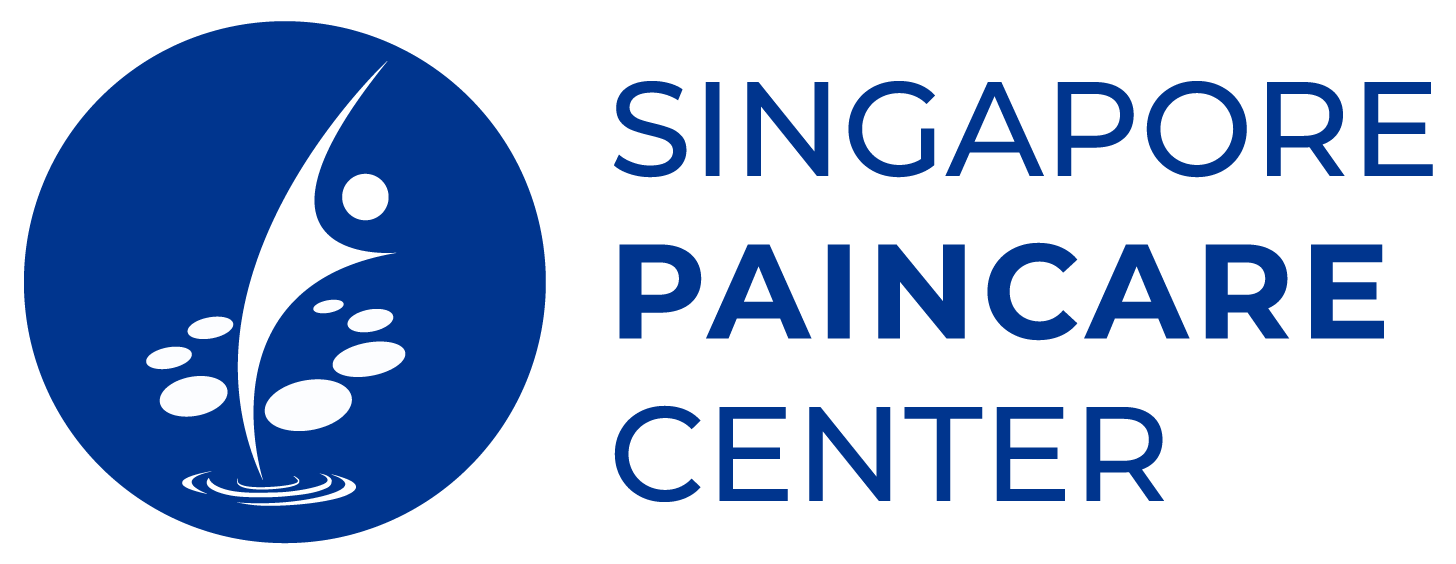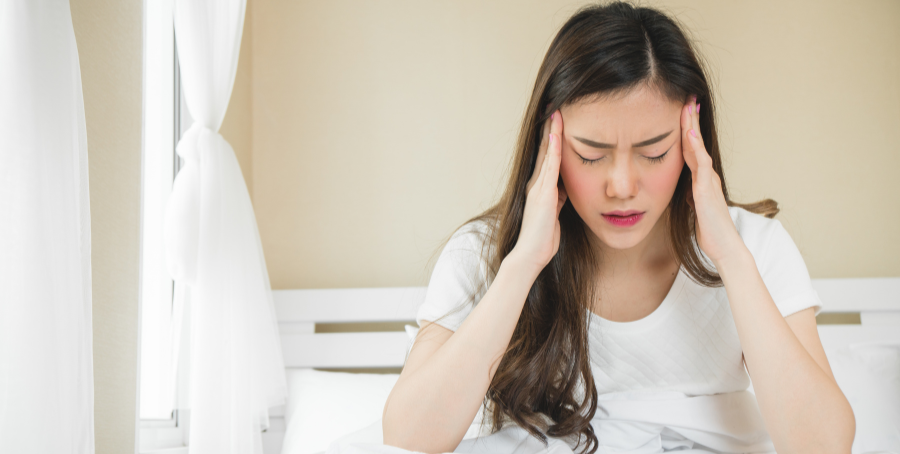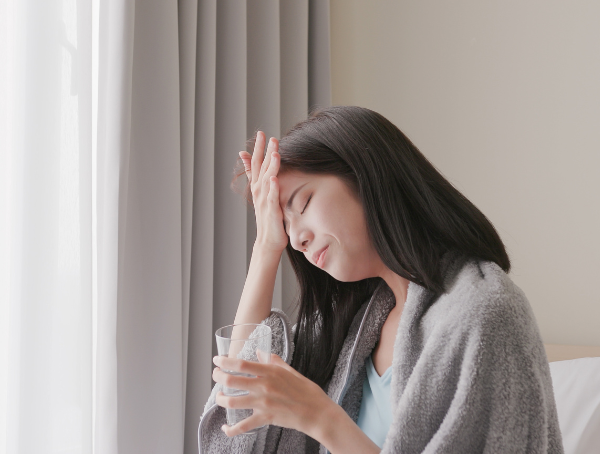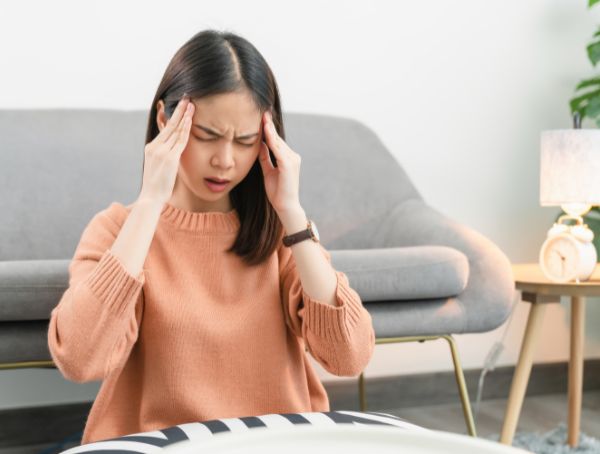If you’re unfortunate enough to suffer from migraines, you know all too well that the pain can be thoroughly disabling. What actually causes migraines, and how do you know if your headache is classified as one?
Read on to learn more about migraine symptoms and how you can prevent and treat this debilitating condition.
What is a migraine?
A migraine is a neurological disorder exemplified by moderate to severe throbbing headaches that can last from a few hours up to a few days. It can occur on one or both sides of the head and tends to worsen with movement, which can limit your ability to function and perform daily activities.
Migraines are often accompanied by nausea or vomiting, as well as sensitivity to light, sound, and/or smells.
What causes migraines?
While migraines are common enough, why some people are so susceptible to them is still a mystery. There are more than 150 types of headaches, most of which have no known cause, including migraines.
While neurological conditions like anxiety, depression, and sleep disorders are common comorbidities (coexisting conditions), they are not the cause of migraines.
What are the symptoms of migraines?
Migraines typically have four stages, although not everyone experiences every phase. A migraine can feel different for different people.
Prodromal phase
This is the phase before the migraine begins and can begin the day before.
● Either unusually excitable or depressed
● Irritable
● Thirsty
● Specific food cravings
● Unusually sleepy
● The need to pee more often
● A greater need to urinate.
Aura phase
An aura is a “warning sign” that may appear before or at the same time as the migraine attack. Most migraines transpire without auras.
● Changes in vision such as flickering light or blind spots
● Hallucinations
● Tingling or pins and needles across the body
● Trouble concentrating
● Confusion
● Trouble expressing thoughts or understanding spoken or written words
Attack phase
To put it bluntly, this is the most painful part and can restrict your daily activities.
● Pain may begin above the eye area
● Throbbing, pulsing pain on one side of the head, which can move from one side to the other
● Pain may also happen in the entire head
● Severity of the pain increases with physical movements
● Extremely sensitive to light, sounds, and smells
● Nausea and vomiting
● Giddiness
● Fainting
Postdromal phase
After the severe headache subsides, these symptoms may linger on for a day or so.
● Fatigue
● Lethargy
● Confusion
● Leaning over, moving quickly, or experiencing a blood rush to the head can trigger head pain
FAQ
How long do migraines last?
The attack phase of migraines typically lasts from about four to seventy-two hours. This differs from person to person, and each attack can be different, even in the same person.
Migraine attacks have four phases, and the total duration of each episodes can range from a day or two to slightly longer than a week at its most extreme.
I have a headache on the left/right side of my head. Is this a migraine?
If your pain is concentrated on one side of the head, it’s likely to be a migraine. However, this can also be an indication of many other conditions, depending on other accompanying symptoms. These include cluster headaches, trigeminal neuralgia, cervicogenic headaches, and even brain aneurysms. In some people, tension headaches can also cause one-sided pain.
Are migraine headaches hereditary/genetic?
Unfortunately, migraines often do run in families. If you have an immediate family member who suffers from migraines, there’s a much higher chance you will have too. The exact genes that influence migraines are not yet well understood.
Can migraines occur without headaches?
Surprisingly, the answer is yes. Most people use the terms ‘headache’ and ‘migraine’ synonymously, but there are silent migraines that occur without head pain. Typical symptoms include a sore neck and jaw, sensitivity to light, sounds, smells, or movement, upset stomach or vomiting, stuffy nose, hot flashes or chills, and confusion.
There is also a condition called abdominal migraine, where the pain is generally felt in the middle of the stomach. Additional symptoms include a loss of appetite as well as nausea and vomiting.
How common are migraines in Singapore?
Migraines are far more common than you may think, especially since many people endure the pain in silence. According to a 2020 study, Economic burden of migraine in Singapore, migraines “affect up to 10% of the population (approximately 330,000 people)” and cost Singapore approximately SGD 1 billion in 2018 alone. A majority of these costs were a result of decreased work productivity.
What triggers migraine headaches?
It should be noted that triggers do not cause migraines – rather, they increase the likelihood of attacks in those who are predisposed to them.
Hormonal changes in women
Due to the drop in estrogen before periods, some women may find that they get migraine headaches during that time of the month. The onset of perimenopause and menopause can cause more frequent and severe migraines due to fluctuating hormone levels. Similarly, hormonal medications such as oral contraceptives (the Pill) can increase the frequency and severity of migraines.
Too much or too little caffeine
The research is pretty confusing when it comes to coffee. According to The Ambiguous Role of Caffeine in Migraine Headache: From Trigger to Treatment, drinking beverages that contain caffeine can trigger migraine attacks – but withdrawal from caffeine is an even more frequent trigger.
As with most things when it comes to your health, moderation is key. If you love your coffee, there’s no need to completely cut it out of your diet, but you shouldn’t overdo it either.
Chronic stress
Did you know that constant stress changes the structure of your brain? If you suffer from chronic migraines, your brain behaves differently from people who don’t. These changes in brain structure can worsen due to prolonged stress, which leads to more frequent migraine attacks.
Odd odours
Different types of strong smells such as perfumes, cigarette smoke, cleaning products, fabric softeners, air fresheners, etc. can set off migraines in some people. Headaches which are triggered by odours tend to be severe and cause nausea and vomiting.
Sounds
Ever found yourself nursing a pounding headache because of construction noises in your area? Whether it’s loud music or relentless drilling, even everyday sounds can be a big problem for some people.
Motion sickness
People with migraines tend to suffer from motion sickness as well, although the reason for the link is unclear. Many drugs used to treat motion sickness increase brain levels of serotonin (5-HT), which indicates that low serotonin may increase symptoms of motion sickness. Similarly, while the exact causes of migraines are unknown, they may be linked to lower-than-normal levels of serotonin.
Weather
Excessive heat, high humidity, or rainstorms can be recipes for disaster in migraine sufferers. It is thought that weather changes trigger chemical and electrical changes in the brain, which irritates the nerves and brings on a headache.
Sleep
Just like caffeine, too much or too little sleep are very common triggers for migraines. Many people with migraines also suffer from insomnia and have difficulty falling or staying asleep. Healthy sleeping patterns can lessen the frequency of migraine headaches.
Medications
Paradoxically, pain medications may trigger more pain. People with migraine headaches are forced to take medication to relieve their symptoms. As their headaches return and they take more medication, the pain returns faster and gets worse. These rebound headaches from medication overuse can develop into chronic migraines. In general, pain medication should be limited to no more than two or three days per week.
Common medications that cause rebound headaches
● Aspirin
● Ibuprofen
● Acetaminophen
● Naproxen
● Sleeping pills
● Codeine pain relievers
● Triptan migraine drugs
● Medicines with caffeine
Foods
This affects about 10% of people with migraines. Some common triggers include food additives like MSG, as well as aspartame, and alcohol. Even foods like chocolate or bread can be triggering for some people.
Aside from the types of food, your eating schedule also plays an important role in managing migraines. If you’re prone to migraines, it’s essential to drink enough water throughout the day and avoid skipping meals.
Are migraine headaches dangerous?
Migraines cause serious pain, which leads many to wonder if there’s an actual injury happening to the brain that could cause permanent damage.
It’s true that migraines can potentially cause brain lesions. While this sounds very concerning, the good news is that these lesions do not cause neurological impairment or changes in cognitive functions such as concentration, memory, and information processing.
Women who experience auras with headaches have a significantly higher risk for stroke. This risk is further increased if they are smokers and use hormonal birth control.
Can an MRI detect migraines?
MRIs cannot be used for migraine diagnosis. However, they are helpful for doctors to eliminate other possible conditions such as abscesses, brain tumours, or fluid buildup (hydrocephalus).
Are migraines a symptom of COVID-19?
Headaches are a potential symptom of COVID-19. Although a COVID-19 headache may resemble a migraine episode, they are two distinct headache types.
A migraine is a primary headache, which means that it is not caused by an underlying condition.
As COVID-19 headaches are caused by an underlying illness, they’re considered secondary headaches. COVID-19 headaches do not usually occur with other symptoms like nausea or sensitivity to light and sound.
How to figure out your migraine triggers or warning signs
Finding your potential triggers might be challenging because it seems like almost anything could be a trigger. It’s often not one single factor but a combination of a few things that lead to an attack. The same triggers may not lead to a migraine attack every time, which makes things even more confusing.
It’s also tough to pinpoint the precise trigger. For instance, you may crave chocolate at the beginning of a migraine attack. After eating the chocolate, you develop a headache and conclude that the chocolate was the trigger, when in fact your craving for sweet food was the warning sign of an impending migraine episode.
Keep a migraine diary
Keeping a diary can be useful for discerning your specific triggers. When you get a migraine attack, take note of the following:
● What day and time the pain began
● What you ate and drank over the prior 24 hours
● How much sleep you had the night before
● Where you were and what you were doing before the pain started
How to cure migraine headaches naturally
Unfortunately, there is currently no permanent cure for this excruciating condition. However, there are some natural methods that sufferers find effective in shortening the duration and severity of attacks.
Take a warm shower or bath
Hot showers can feel amazing when you’re suffering from a headache. The combination of warm steam and water can do wonders to relax tense muscles and increase blood flow. You can use certain essential oils in your shower if it helps you to relax. You should opt for a fragrance-free soap if smells make you feel sick and avoid hot showers and baths if you feel dizzy.
Controlled breathing
People who are stressed and anxious tend to hold their breath without realising it. Not getting enough oxygen to the brain can worsen migraine attacks. Find a quiet spot and practice slow, rhythmic breathing for a few minutes to reduce head pain.
Drink more fluids
Sometimes, the simplest things like drinking enough water are the most important. Dehydration can trigger migraines that feel like hangover headaches. Drinking fluids are helpful in easing the severity of your headache.
Dim the lights
A majority of people with migraines have a sensitivity to light, or photophobia, during attacks. Lights that would normally be comfortable may suddenly seem too bright. The glare from the sun can also set off a migraine attack. If possible, avoid staring at a screen and rest in a dark and quiet room.
Drink coffee
Blood vessels tend to enlarge before a migraine headache. Caffeine has vasoconstrictive properties and can constrict blood vessels, which reduces blood flow to your brain and alleviates migraine pain.
Caffeine is also known to enhance the effects of some types of pain medication. Just remember to consume caffeinated drinks in moderation. Increasing or decreasing your usual intake drastically will not help your headaches.
Try ginger tea or ginger oil
Ginger is particularly effective for those who suffer from nausea along with migraine headaches. Many women swear by this common folk remedy for morning sickness. Drinking ginger tea or massaging ginger oil into the back of the neck, temples, and forehead can help to reduce nausea.
Gentle stretching
Stretching releases physical tension and can help ease migraine pain. One of the most effective stretches is the side neck bend, which can be performed while seated or standing. Simply lower your ear to your shoulder and hold for 30 seconds on each side. This helps with tension in your shoulders and neck that may be worsening your pain.
When should I see a doctor?
Anyone who experiences frequent and recurring headaches of any kind should see a doctor. Milder headaches can go away with rest, relaxation, and over-the-counter analgesics. However, more intense headaches may require immediate medical attention.
OTC medication isn’t working
If your headaches are no longer responding to over-the-counter pain medication, it’s time to check in with a doctor. Taking headache medicines too often puts you at risk of developing medication overuse headaches.
Your headache is more intense and frequent
Have you noticed an uptick in the number of headaches you experience in a given time frame? For instance, if you used to have 5 migraine headache attacks a month but this has increased to 10 episodes, you should see a doctor to rule out more serious conditions. Similarly, if you’re experiencing more severe pain than before, let your doctor know.
You have a head injury
Headaches that happen after you hit your head may be caused by pooled blood or fluid inside the skull. It’s important to speak to a doctor and start treatments early to prevent complications.
You’re in unbearable pain
Severe and sudden head pain that is unbearable and peaks in seconds to minutes can be life-threatening. These are known as thunderclap headaches and are caused by bleeding in the brain, which is a medical emergency.
You should also call an ambulance if you experience headaches accompanied by any of the following symptoms: numbness, coordination problems, visual impairments, speech problems, confusion, or weakness in the face, arms, or legs.
What kind of doctor treats migraine headaches?
General Practitioner (GP)
Generally speaking, your family doctor is a great place to diagnose your condition and begin a treatment plan, provided that your headaches are not so frequent and severe that they affect your daily life.
As an alternative to the long-term use of painkillers, our GPs provide Coreflex injections for migraines, which have minimal downtime and provide long lasting relief.
Pain specialist
If you find your headaches getting worse, even with treatment and medication, you may need to see a pain specialist for a thorough evaluation. Pain specialists specialise in the diagnosis, evaluation, and treatment of pain conditions. Their advanced training enables them to accurately diagnose the source of pain for complex conditions as well as any underlying illnesses that might be causing it.
Depending on the severity and frequency of your headaches, your doctor may prescribe preventive medications such as beta blockers, antidepressants, or anti-seizure drugs. There are also non-surgical minimally invasive treatment options such as injections and radiofrequency ablation that can provide long-term relief and significant pain reduction.









